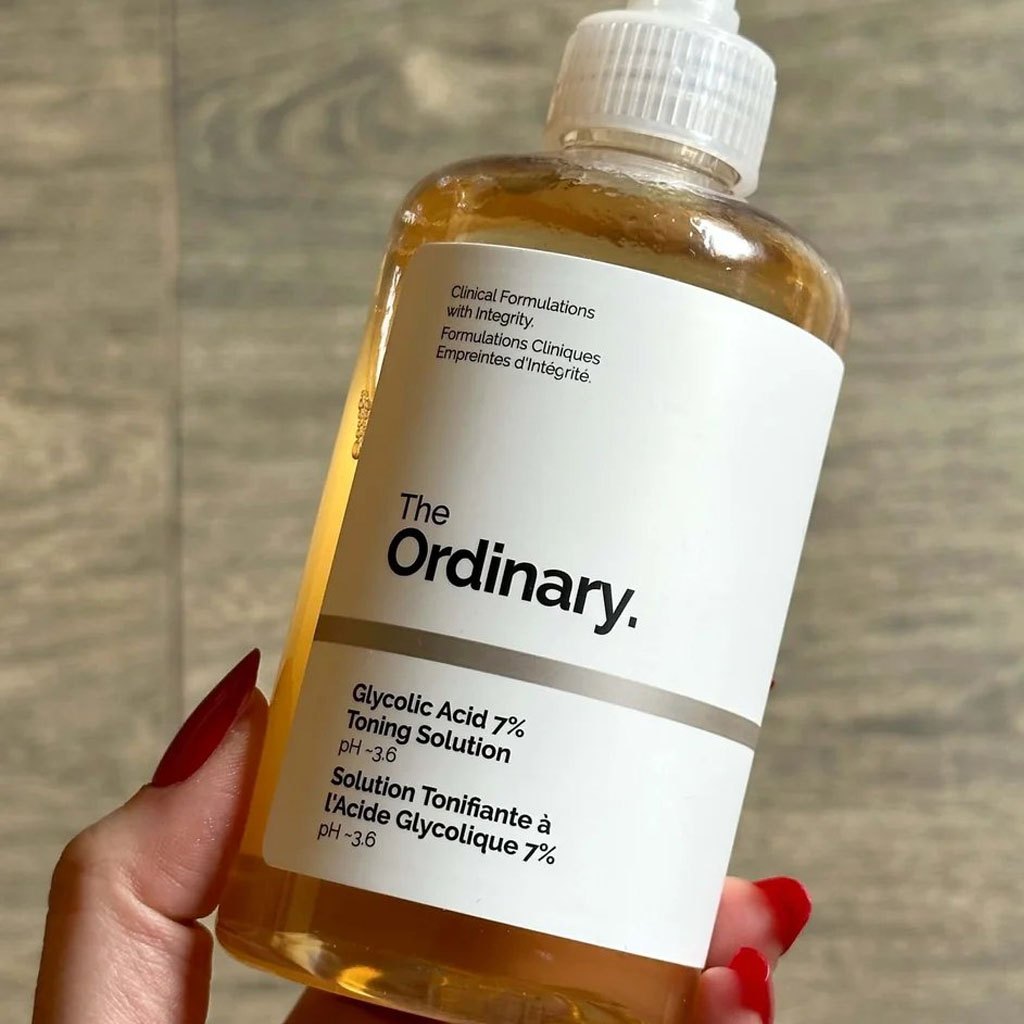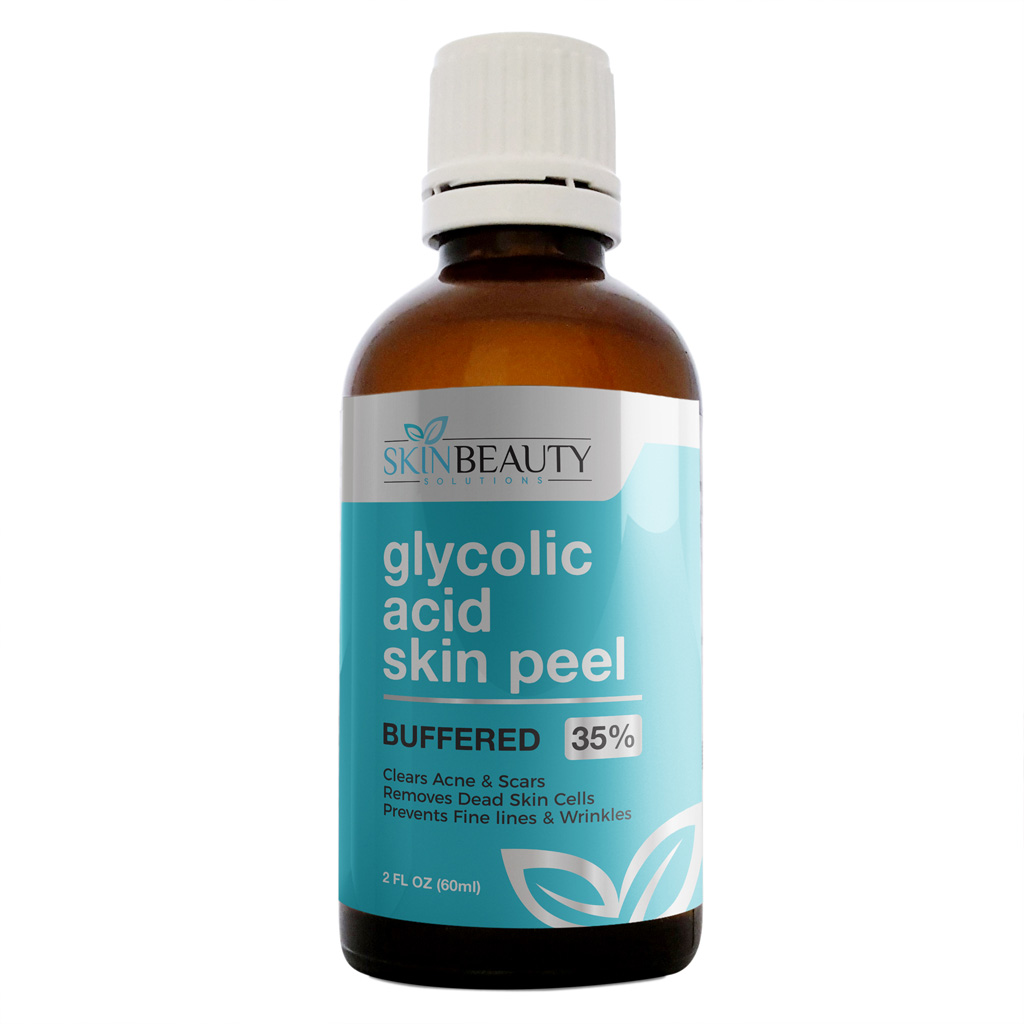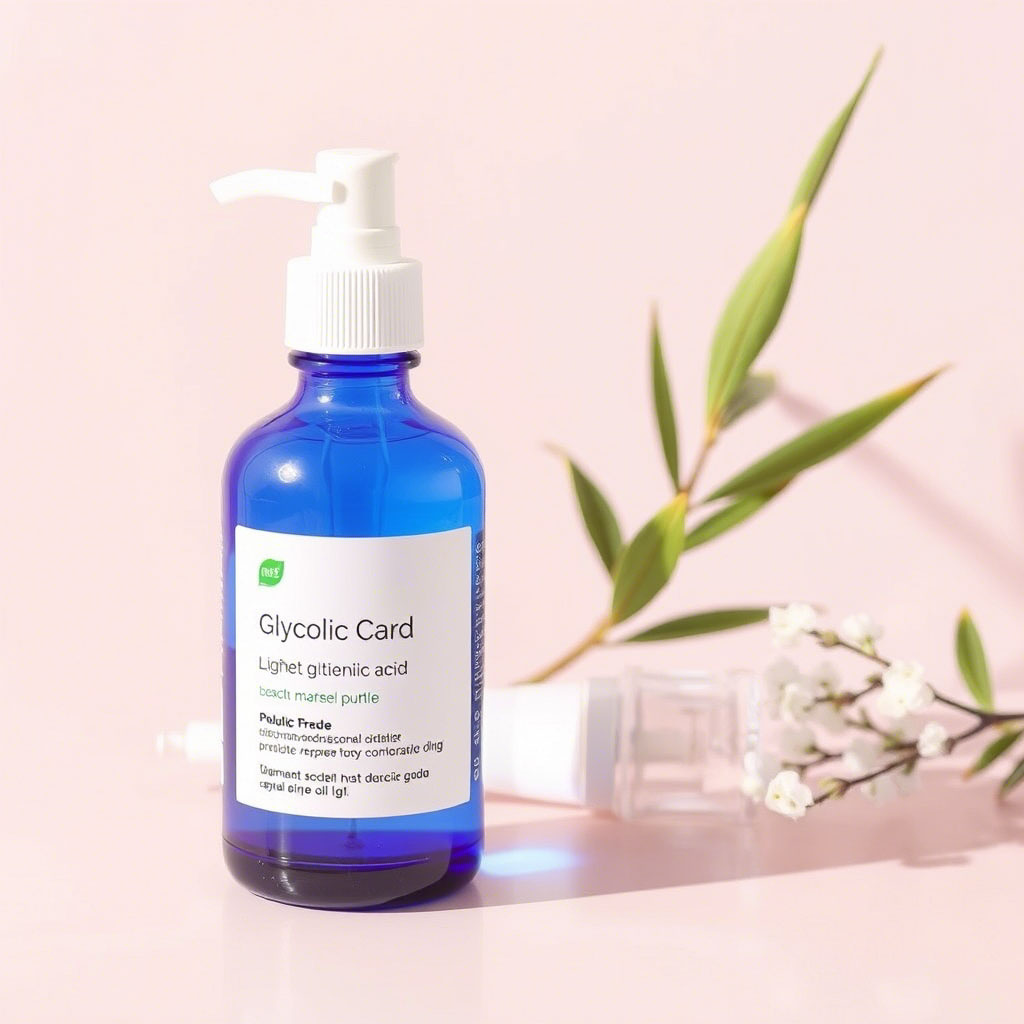Glycolic Acid for Skin Care is a popular ingredient in skincare routines due to its powerful exfoliating properties. As an alpha hydroxy acid (AHA), glycolic acid helps remove dead skin cells, promoting smoother, brighter skin. It stimulates collagen production, improving skin texture and reducing the appearance of fine lines. Regular use can address various skin concerns, including acne, hyperpigmentation, and uneven skin tone. Glycolic acid is widely found in cleansers, toners, masks, and serums, making it a versatile product for maintaining healthy, radiant skin. When used properly, it can transform your skincare routine.
Click to use Silverigroup personal shopper services
What is Glycolic Acid?
Glycolic acid is a type of alpha hydroxy acid (AHA) derived from sugar cane. It is one of the smallest AHAs, which allows it to penetrate the skin more effectively. This makes it a powerful exfoliant, commonly used in skincare to remove dead skin cells and promote the regeneration of new skin. Glycolic acid helps to improve skin texture, tone, and overall appearance by promoting cell turnover. It is widely included in many skincare products such as cleansers, toners, exfoliating masks, and serums due to its ability to treat various skin concerns like acne, fine lines, and hyperpigmentation.
| Specification | Details |
|---|---|
| Chemical Structure | C₂H₄O₃ (Alpha Hydroxy Acid) |
| Source | Derived from sugar cane |
| Molecular Size | Smallest AHA, allows deeper penetration |
| pH Level | Typically 3-4 (slightly acidic) |
| Texture | Clear, liquid, or gel-like |
| Concentration Range | 5% to 30% in skincare products |
| Main Benefit | Exfoliates dead skin cells |
| Common Uses | Acne treatment, anti-aging, brightening |
| Recommended Skin Types | All skin types (with caution for sensitive skin) |
| Side Effects | Irritation, dryness, sun sensitivity |

Top Benefits of Glycolic Acid for Skin Care
Glycolic acid is a powerhouse ingredient in skincare, known for its exfoliating, brightening, and anti-aging properties. It helps improve skin texture, reduce acne, fade hyperpigmentation, and boost collagen production. In the following sections, we explore how glycolic acid benefits the skin in various ways, enhancing overall complexion and health.
Click to buy citric acid from Silvairgroup
1. Glycolic Acid for Acne Treatment
Glycolic acid is a powerful ingredient for treating acne. As an exfoliant, it helps to remove dead skin cells that can clog pores and lead to breakouts. By encouraging cell turnover, it prevents the buildup of debris in pores, reducing the formation of blackheads and whiteheads. Additionally, glycolic acid has anti-inflammatory properties that can help soothe irritated skin, promoting faster healing of acne lesions. Regular use of glycolic acid can also help fade acne scars and reduce the appearance of post-inflammatory hyperpigmentation. However, it’s important to:
- Use glycolic acid carefully to avoid irritation;
- Start with a lower concentration for acne-prone or sensitive skin.
2. Glycolic Acid for Fine Line and Wrinkle Reduction
One of the most celebrated benefits of glycolic acid is its ability to reduce fine lines and wrinkles. By stimulating collagen production, glycolic acid promotes skin firmness and elasticity. As a chemical exfoliant, it removes dead skin cells from the surface, revealing fresher, younger-looking skin. Glycolic acid also helps to improve skin texture, making fine lines less noticeable. Consistent use can result in:
- Smoother skin with reduced wrinkles;
- Increased collagen production, making the skin firmer.
Click to buy Beluga Fresh Frozen from Silverigroup
3. How Glycolic Acid Helps with Hyperpigmentation?
Glycolic acid is highly effective in treating hyperpigmentation, such as dark spots, melasma, and sun damage. Its exfoliating action helps to break down the bonds between dead skin cells, encouraging faster shedding of pigmented skin. This process allows for the creation of new, unpigmented skin cells. Glycolic acid also aids in:
- Lightening hyperpigmentation by accelerating skin turnover;
- Fading dark spots and uneven skin tone. For best results, it’s often combined with other brightening ingredients like Vitamin C.
4. Glycolic Acid for Skin Brightening
Glycolic acid is renowned for its skin-brightening properties. By gently exfoliating the top layer of skin, it removes dead skin cells that can make the complexion look dull and uneven. This reveals fresher, brighter skin underneath. Glycolic acid works by:
- Improving skin texture;
- Stimulating collagen production;
- Increasing circulation, all of which contribute to a more radiant complexion.
It also helps to reduce the appearance of sunspots, age spots, and discoloration, leaving the skin looking more luminous.
5. Glycolic Acid for Improving Skin Texture
Using glycolic acid regularly can significantly improve skin texture by removing the buildup of dead skin cells on the surface. This leads to smoother, more refined skin. Glycolic acid stimulates collagen production, which improves the overall structure of the skin and can reduce:
- Roughness;
- Bumps;
- Enlarged pores.
Additionally, it accelerates cell turnover, revealing fresh, soft skin underneath. Over time, glycolic acid helps reduce unevenness and promotes a clearer, healthier complexion.
6. Glycolic Acid as an Exfoliator for Smooth Skin
Glycolic acid is one of the most effective exfoliants for achieving smoother, softer skin. As an AHA, it works by breaking down the bonds that hold dead skin cells together on the surface of the skin. This exfoliation process reveals a smoother, more radiant layer of skin. Regular use of glycolic acid helps to:
- Prevent clogged pores and skin buildup;
- Leave the skin feeling clean and refreshed;
- Promote the production of new skin cells for a smoother complexion.
For best results, glycolic acid should be used consistently but with caution, especially for sensitive skin.
7. Glycolic Acid for Reducing Clogged Pores and Blackheads
Clogged pores are a common skin issue that can lead to blackheads and acne. Glycolic acid helps to keep pores clear by exfoliating the skin and removing the buildup of dead skin cells, oil, and dirt that contribute to blockages. Its ability to accelerate skin cell turnover ensures that pores stay unclogged, reducing the formation of blackheads and breakouts. By regularly using glycolic acid in your skincare routine, you can:
- Prevent pore congestion;
- Promote clearer, healthier skin. Additionally, glycolic acid helps to refine the appearance of pores, making them less noticeable.
8. Glycolic Acid in Treating Uneven Skin Tone
Glycolic acid is a powerful tool for treating uneven skin tone and discoloration. It helps to exfoliate the skin, removing pigmented cells from the surface and promoting an even skin tone. By speeding up cell turnover, glycolic acid reveals fresher, more uniform skin underneath. It’s particularly effective in treating:
- Sunspots;
- Melasma;
- Post-inflammatory hyperpigmentation.
Glycolic acid can also improve the overall radiance of the skin, making it look more vibrant. With consistent use, it helps fade discoloration and even out skin tone.
9. Glycolic Acid Enhancing Collagen Production
Glycolic acid is not only an exfoliant but also a powerful stimulant for collagen production. Collagen is a vital protein responsible for maintaining the skin’s firmness and elasticity. By increasing collagen synthesis, glycolic acid helps to improve skin texture and reduce the appearance of fine lines and wrinkles. The acid penetrates deeply into the skin, encouraging the production of new skin cells and boosting the skin’s structure. Regular use of glycolic acid results in:
- Firmer, more youthful-looking skin;
- Enhanced collagen production for improved elasticity.
Its collagen-boosting effects make it an essential ingredient in anti-aging skincare routines.
Choosing the Right Glycolic Acid Products for Your Skin Type
Selecting the right glycolic acid product depends on your skin type, sensitivity, and specific concerns. With various formulations available, understanding how to match them to your skin type ensures maximum benefits while minimizing irritation.

For Oily and Acne-Prone Skin
- Choose higher concentrations (10–15%) to help clear clogged pores and reduce breakouts;
- Look for gels, toners, or lightweight serums that absorb quickly.
For Dry or Sensitive Skin
- Opt for lower concentrations (5–8%) to prevent excessive dryness;
- Select products with hydrating ingredients like hyaluronic acid or ceramides to maintain moisture balance.
For Combination Skin
- Use a moderate concentration (7–10%), depending on your needs;
- Consider alternating application days to prevent over-exfoliation.
For Mature Skin
- Higher concentrations (12–15%) work well for reducing fine lines and wrinkles;
- Look for creams or overnight treatments to support skin renewal.
Patch testing before use is essential to avoid irritation. Start with lower concentrations and gradually increase as your skin builds tolerance.
Glycolic Acid vs Other AHAs: What’s the Difference?
Glycolic acid is the most well-known and widely used alpha hydroxy acid (AHA) in skincare. Derived from sugar cane, it has the smallest molecular size among AHAs, allowing it to penetrate deeply and effectively exfoliate the skin. This makes glycolic acid highly effective for brightening skin, reducing fine lines, and treating acne. Its fast-acting nature makes it ideal for those seeking quick, noticeable results, especially for improving texture and radiance.
Other AHAs, such as lactic acid, citric acid, and mandelic acid, offer unique benefits depending on their molecular size and source. Lactic acid, for example, is gentler and more hydrating, making it suitable for sensitive or dry skin. Citric acid, often derived from citrus fruits, provides antioxidant properties, while mandelic acid, with a larger molecular size, is slower in penetration but ideal for sensitive skin. While glycolic acid is the most potent, other AHAs offer milder, more targeted solutions based on individual skin concerns. Therefore, choosing the right AHA depends on your skin’s needs and tolerance.
Potential Side Effects of Glycolic Acid
While glycolic acid offers numerous skincare benefits, it can also cause side effects, particularly if not used correctly. One of the most common reactions is skin irritation, which may include redness, itching, or a burning sensation, especially for those with sensitive skin. This irritation occurs because glycolic acid accelerates skin cell turnover, and overuse can strip the skin of its natural oils, leading to dryness or peeling.
Another potential side effect is sun sensitivity. Glycolic acid can make the skin more prone to sunburn due to its exfoliating properties. It’s crucial to apply a broad-spectrum sunscreen with a high SPF when using glycolic acid to protect the skin from UV damage. Overuse of high concentrations can also lead to chemical burns or excessive irritation, particularly in those new to exfoliation. To avoid these side effects, start with lower concentrations and gradually increase usage as your skin builds tolerance. Always patch test before applying glycolic acid to larger areas of the skin.
Conclusion
In conclusion, glycolic acid is a powerful and versatile ingredient in skincare, offering numerous benefits such as improved texture, reduced fine lines, and brighter skin. When used correctly and with the right concentration for your skin type, it can address various skin concerns like acne, hyperpigmentation, and aging. However, it’s essential to be mindful of potential side effects like irritation or sun sensitivity. To achieve the best results, choose products that suit your specific needs, start with lower concentrations, and always use sunscreen. With proper use, glycolic acid can significantly enhance your skincare routine and complexion.
FAQs
What should I avoid when using glycolic acid?
When using glycolic acid, avoid direct sun exposure without sunscreen, as it can increase sensitivity. Also, avoid mixing with strong exfoliants, retinoids, or vitamin C, as these combinations can cause irritation or sensitivity. Be cautious with harsh skincare routines to prevent over-exfoliation.
Is glycolic acid better on wet or dry skin?
It’s generally better to apply glycolic acid on dry skin. Applying it to wet skin can dilute the acid, reducing its effectiveness. Dry skin allows for better penetration, ensuring maximum exfoliation and skin benefits. Always make sure your face is dry before application.
Is 5% glycolic acid safe to use everyday?
Yes, 5% glycolic acid is generally safe for daily use, especially for those with sensitive or dry skin. However, monitor your skin for irritation or dryness. If no adverse reactions occur, you can incorporate it into your routine, but always follow with sunscreen to protect your skin.
What to pair with glycolic acid?
Pair glycolic acid with hydrating ingredients like hyaluronic acid or soothing agents like aloe vera to counteract any dryness or irritation. You can also pair it with antioxidants like vitamin E to protect the skin, but avoid combining it with strong exfoliants or retinol.
Can I leave glycolic acid toner on overnight?
Yes, you can leave glycolic acid toner on overnight, but it’s important to ensure your skin can tolerate it. Start by applying a thin layer and monitoring for irritation. Always use a sunscreen the following morning, as glycolic acid increases sensitivity to UV rays.
Can I mix glycolic acid with niacinamide?
Yes, glycolic acid can be mixed with niacinamide. Niacinamide helps to soothe the skin and can counterbalance any irritation caused by glycolic acid. This combination can be especially beneficial for treating acne, pigmentation, and maintaining skin barrier function.
Is glycolic acid safe for armpits?
Glycolic acid is generally safe for use on the armpits, but it should be used cautiously, especially if you have sensitive skin. It can help exfoliate dead skin cells and reduce dark spots. However, avoid using it on freshly shaved or irritated skin to prevent irritation.
What Cannot be mixed with glycolic acid?
Avoid mixing glycolic acid with other strong acids like vitamin C, salicylic acid, or retinol. These ingredients can cause excessive irritation and dryness. Also, be cautious when combining glycolic acid with products containing alcohol or astringents that may further irritate the skin.
Which is better, retinol or glycolic acid?
Both retinol and glycolic acid are beneficial for skin, but they serve different purposes. Retinol is great for reducing wrinkles and stimulating collagen production, while glycolic acid excels at exfoliating and brightening the skin. They can be used together but should be applied at different times to avoid irritation.
Is it better to use glycolic acid at night or morning?
Glycolic acid is best used at night because it increases your skin’s sensitivity to sunlight. Using it in the evening allows it to work overnight without the risk of sun damage. Always apply sunscreen in the morning to protect the skin from UV rays after glycolic acid use.

